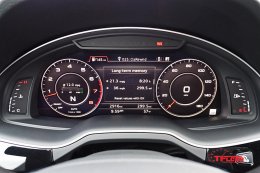LuisM
Registered User
Does anyone have some information about this? I mean the standard A3 regenerative braking in petrol or diesel engines; not the electrical engine (e-tron).
My understanding is that while you are braking, or coasting, the alternator somehow generates more power, which is stored in the battery. But I'd like to know more details about this.
The main reason why I'm asking is to know if it's better pressing the clutch or not while you are stepping on the brake. If you don't press the clutch, the brakes have extra work to do (to stop the engine turning, which is engaged to the wheels). That suggests it's better to press the clutch. But: if that extra "work" is actually transformed into electrical energy that is transferred to the battery, then it's better not to press the clutch (to have more regeneration).
My understanding is that while you are braking, or coasting, the alternator somehow generates more power, which is stored in the battery. But I'd like to know more details about this.
The main reason why I'm asking is to know if it's better pressing the clutch or not while you are stepping on the brake. If you don't press the clutch, the brakes have extra work to do (to stop the engine turning, which is engaged to the wheels). That suggests it's better to press the clutch. But: if that extra "work" is actually transformed into electrical energy that is transferred to the battery, then it's better not to press the clutch (to have more regeneration).





